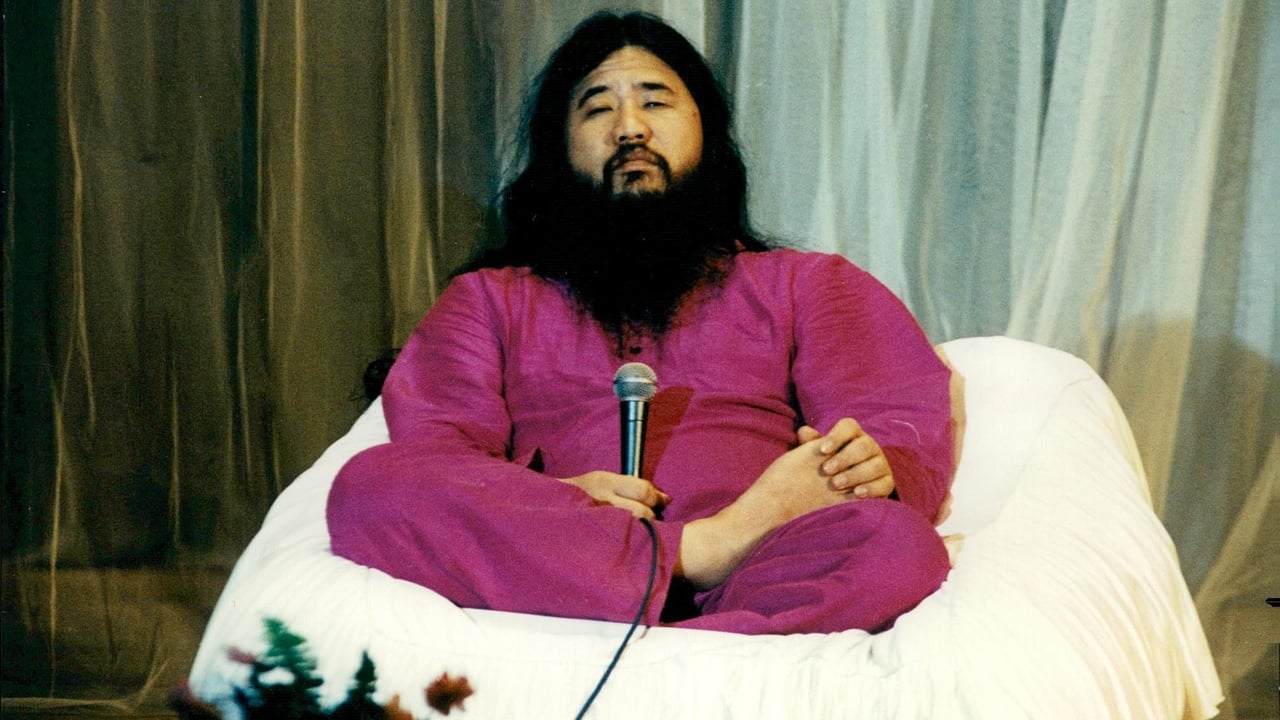



Intense, gripping, stylish and poignant
Crappy film
One of the worst ways to make a cult movie is to set out to make a cult movie.
View MoreThe story, direction, characters, and writing/dialogue is akin to taking a tranquilizer shot to the neck, but everything else was so well done.
View MoreThe Aum Shinrikyo sarin gas attack on the Tokyo subway was an epochal event. It ended the myth of Japan as a 'safe' society, and as the catalogue of atrocities that had preceded the subway attack came to light, the Japanese were forced to face up to some home truths - namely that this particular cancer was home-grown and not a result of corrupt outside influences.Anyone coming to this documentary looking for insight into why the cult chose to indulge in indiscriminate slaughter will be disappointed. By the time this documentary begins, the perpetrators are incarcerated, on the run, or murdered. The main players here are the new generation of leaders who were apparently (perhaps willfully) unaware of their seniors' machinations. Asked to explain such events, they are baffled and tongue-tied, torn between filial loyalty and overwhelming evidence of guilt. Ironically, they are just like many present-day citizens of Japan contemplating the war atrocities such as Nanjing and sex slaves carried out by previous generations.There is, however, insight to be had from A. The camera stays with Araki, the new head of PR, as he navigates through a hostile terrain of police, public and press during the trials of senior Aum figures. An affable, articulate, self-effacing young man, he offers no explanation for why Aum attacked Japanese society. But through his eyes, it becomes abundantly clear why Araki chose to reject that society in favour of Aum. The press pack come across as morons, condescending and ingenuous in their approaches to Araki. The police are goons who simply take the law into their own hands, at one point carrying out an assault on camera with impunity. If the victims were anyone other than Aum members, this footage would be material akin to the Rodney King tape. The public, admirably restrained, nonetheless urge the cultists to find a job, get married, settle down - and are met with bemused stares, and the audience realises that brainwashing is not the exclusive reserve of the cult.Mori paces this documentary expertly. He is compassionate towards the cultists without being in thrall to them. Just when we think they might be decent sorts after all, Mori tries to have them answer serious questions about guru Asahara, and they suddenly talk nonsense about levitation or how people don't need food, and they are revealed as zealots. These moments are judiciously spaced and remind us that the Aum members are at best lost, at worst seriously disturbed.'A' is uncomfortable viewing, especially for those of us who live in Japan. There are no good guys here, just a series of social archetypes, each tarnished to varying degrees. For an introduction to Aum that leads nicely into this documentary, read The Cult at the End of the World. Like the documentary, it makes clear that Aum is not the antithesis of Japanese society, but very much a child spawned by it.
View More"A" refers to the name of the cult or religious group which is the subject of this film. It follows the day-to-day activities of members of the Augm Shinrikyo sect and in particular the group's "press officer", a somewhat awkward but totally sincere young man. Augm (as they were commonly referred to) was found to be responsible for attacks on commuters using the Tokyo subway system. Sarin, a biological agent, was used and the events were widely covered by the world media. Japan as a society was greatly shocked by the event and the Augm members were portrayed as mindless automata, blindly obeying the charismatic leader of the cult's destructive wishes.As the film proper gets underway (after a quick-fire barrage of images which attempts to communicate the sensationalistic coverage of the attacks and the ensuing disbelief and outrage in Japan), we are confronted by the very gritty reality of the actual cult members. The fact that they've agreed to be followed and filmed in the (literally) months covered by the film seems utterly remarkable considering their very apparent and wide-ranging suspicion of the media and the outside world generally. We meet several of the cult members and witness a few of the quite daunting aspects of their communal existence. Although it is entirely possible that they were at least aware of the plans to use sarin, it seems highly unlikely from what we learn of them and their attitude to the taking of life. Their devotion to the group is seemingly undimmed by the attacks and subsequent jailing of their leader, Asahara, although they later decide to publicly "demote" him from his former divine status amongst the Augm faithful when that becomes unsupportable.Despite the obvious abnormalities of the lives depicted, it becomes very clear that these are relatively ordinary people who have been thrust into an utterly extraordinary situation. They are publicly scrutinised, demonised and accused by the acutely conservative society in which they live and adopt a siege mentality as a result. Although it's certainly true that their group used classic brainwashing techniques on their members (sleep and food deprivation, psychedelic drugs etc...), it also becomes clear that much of the murderous intent in Augm's activities springs directly from the incarcerated Asahara. As with other cults in recent decades, the leader's wishes and desires became megalomaniacal. Sex with Asahara became more and more of a requisite for female members to achieve a state of grace and apocalyptic events became objectives to be achieved rather than pre-ordained inevitabilities.Essentially, the cult is reeling in the aftermath (and the vacuum) created by the loss of Asahara rather than the sarin attacks. They had already dropped out of Japanese society and probably viewed the attacks as something happening in another country. For the individuals within Augm, dogged and resolute as they were despite the end of life as they knew it, this film is a document of their decline as a community and how they - and their young press officer in particular - adapt to this. In that way, they are victims themselves - in as far as someone who voluntarily puts themselves in a situation which subsequently goes wrong is - but not nearly as much as the unwitting victims of the barbaric sarin attacks. In the end, the film shows that you simply have to recognize the humanity of those depicted which many Japanese simply do not. This gives away practically none of the real "narrative" (if there is one) and tells nothing of the many tragicomic scenes in the film which make it as compelling as it is. Please see it if you can.
View More